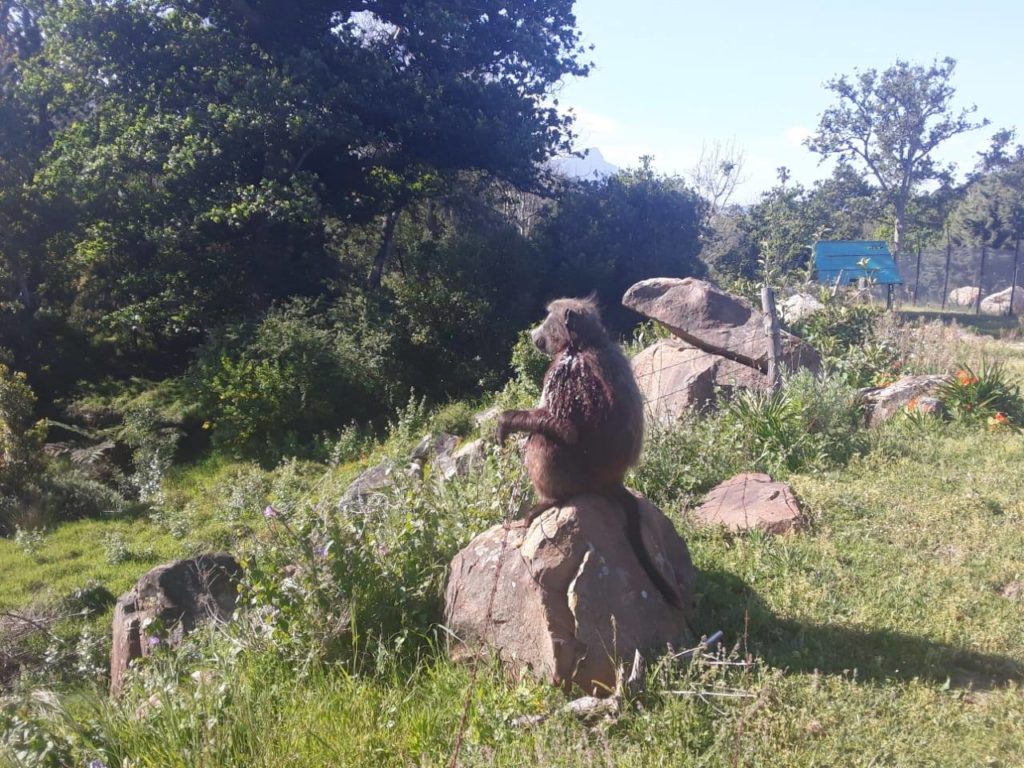Residents were horrified to discover beloved baboon Kataza had sustained serious injuries to his left shoulder and was heavily bleeding on Saturday, October 10.
The images were captured by a concerned citizen named Ryno Engelbrecht, describing Kataza’s injuries and the way he has been treated over the past few weeks as ‘appalling, horrific and unacceptable’.
Conservation in Cape Town.This is appalling, horrific and unacceptable. You were continuously warned about this City…
Gepostet von Ryno Engelbrecht am Samstag, 10. Oktober 2020
According to Baboon Matters, Kataza was attacked by male baboons of the Tokai troop and sustained an injury to his lip. He was attacked by the males again on Saturday afternoon, this time suffering a slash wound between his neck and shoulder that resulted in copious blood loss.
Baboon Matters says that Kataza was treated but not sedated by the Cape of Good Hope SPCA on Saturday, as his overall blood loss made it too risky to sedate him.
Inspectors from the Cape of Good Hope SPCA returned to Tokai on Sunday with a private veterinarian that specializes in wild animals, and in particular baboons. They monitored Kataza extensively, and concluded that he is not in need of intervention at this time.
“Kataza was found to be mobile, expressing normal baboon behaviour and the wound on his neck is no longer bleeding. At this stage, the veterinarian is of the view that no intervention is required at this time. By darting Kataza at this stage will cause more damage and will certainly affect the integration process,” the SPCA explained in a Facebook post.
“Kataza has been seen interacting with the troop. Our team will continue to monitor Kataza and will not hesitate to intervene should he require urgent veterinary attention.”
The SPCA urges the public to not interfere with Kataza as it could interrupt his integration process.
“We are calling on the public to please allow for the integration process and to not approach Kataza or the troop,” the SPCA concluded.
Picture: Facebook / Cape of Good Hope SPCA






